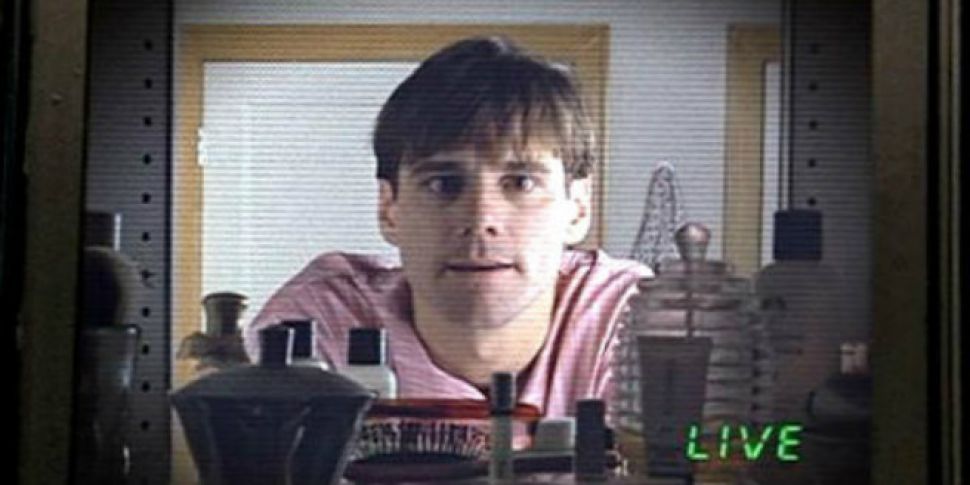Introduction
Reality television programs have now become a staple of modern-day life. However, we understand little about the result they have on daily living. Back in 2012, Joel Gold and Ian Gold released a paper in the journal Cognitive Neuropsychiatry about a phenomenon. They called it the ‘Truman Show Delusion’ (TSD), also known as ‘Truman Syndrome’. It was based on Peter Weir’s 1998 film that told the story of Truman Burbank. In it, his whole life had actually been filmed and broadcast as a reality daytime soap around the globe from the day he was born. All of this occurred without Truman’s understanding. All individuals around Truman were actors.
The Truman Show Delusion
The plot of The Truman Show revolved around Truman’s steady awareness that there was something incorrect about his life. (i.e., that the world appears to focus on him) Fuelling his desire to get away the town in which he is living. Due to the high audience ratings, the program’s manufacturers try to keep the show. Despite Truman beginning to suspect there is something wrong in his life. The program’s producers and writers then advise the actors to tell Truman that he is thinking of these things. This is to convince him he is (to all intents and functions) psychologically ill (i.e., a persecutory misconception).
In their paper, Gold and Gold described the conditions as:
” … a novel delusion, mostly persecutory in type, in which the patient thinks that he is being recorded. And that the films are relaying for the entertainment of others. We describe a series of clients who provided with a delusional system. According to this, they were the topics of something comparable to a truth tv show that was broadcasting their everyday life for the entertainment of others”

Gold and Gold Research
Gold and Gold highlighted 5 short case research studies of patients presented for treatment in their psychiatric practices. The cases ‘diagnosed’ as having the Truman syndrome are the reverse of what took place in the movie as their reported signs remember that Truman, without the understanding and awareness that their attempts to understand their situation will cause a [Hollywood] happy ending. Surprisingly, 3 of the cases with the syndrome highlighted by the authors referred to The Truman Show by name.
Here is a brief summary of the five cases.
Case 1 (‘ Mr. A’):
Mr A. declared his life was like The Truman Show. A belief that he had actually held for 5 years without his family’s understanding. He believed the 9/11 attacks were faked and travelled to New York to see if the Twin Towers were still standing (and if they were, it would prove that he was the star of his own show). Also thinks that everybody in his life belongs to the conspiracy and that he has video cameras implanted in his eyes (and when in the psychiatry department he asks to speak with the ‘director’). Subsequently, he was detected as having schizophrenia (and more specifically a persistent paranoid type versus substance-induced psychotic condition).
Case 2 (‘ Mr. B.’):
Mr B. thought he was being constantly recorded for nationwide broadcast. He created a “strategy to come to NYC and satisfy an unidentified woman at the top of the Statue of Liberty. He expected [her] to launch him from the control of a prolonged network of individuals who [were] … taping him constantly … and relaying the tapes nationally for audiences’ satisfaction as part of a scenario similar to … The Truman Show”. He believed he “was and am the centre, the focus of attention by millions and millions of individuals … my [family] and everyone I understood were and are stars in a script, a charade whose whole function is to make me the focus of the world’s attention”. He had actually tried suicide 3 times due to dysphoria, hopelessness, and persecutory deceptions. Later,his diagnosis says he has schizoaffective condition (bipolar type) along with both fracture drug and marijuana dependence.
Case 3 (‘ Mr. C’):
Mr. C.– a reporter– had a history of depression, and was manic and psychotic. He thinks that stories– in newspapers, online, and on television– are producing by his associates in the media for his individual amusement. He thought that those around him were paid stars, and that whatever around him was fake, which “all [his] partners are involved”. During his hospitalization, Mr. C. attempted to escape to confirm whether there were variations in between the news provided on the ward and what was happening outdoors. His condition: having a bipolar affective disorder with psychotic features.
* Case 4 (‘ Mr. D.’):
Mr D. actually dealt with a reality tv program and concerned think that he was the person whose life was a transmission. He believed he was “a secret entrant on a reality show and believed he was being shot. Likewise believes all his ideas were being controlled by a film team paid for by his family. Subsequently, his diagnosis says bipolar illness, had manic episodes, and a marijuana abuser.
Case 5 (‘ Mr. E’):
Mr E. thought that the Secret Service was following him. He had attention deficit hyperactivity disorder and had bouts of anxiety. He described a “scheme” that he declared resembled The Truman Show. Gold and Gold reported that Mr. E. “thinks that he is the master of the plan, that it involves everyone in his life consisting of the health center staff, which all these people were actors. He believes that someone was taping him while in a medical facility. Also thought that the news was a fabrication and that the radio was for him … He believed that the plan would end on Christmas Day and that he would be released then”. Subsequently, his diagnosis was a schizophreniform disorder versus methylphenidate-induced psychotic disorder.
Research (contd.)
Gold and Gold search in the academic and medical literature for other comparable clinical reports of patients with The Truman Syndrome, however, says there were none. Nevertheless, they did cite a 2008 research study by Dr. Fusar-Poli and colleagues in the British Journal of Psychiatry. They reported the case of a person who “had a sense the world was a little unreal as if he was the eponymous hero in the movie The Truman Show [however] at no point did his conviction reach delusional intensity”. They likewise referred to two reports (one in 2007 and the other in 2009) of guys who appear to have actually struggled with the TSD.
” In 2007, William Johns III, a psychiatrist from Florida, attempted to abscond with a kid, Thorin Novenski and consequently assaulted the child’s mom. A report on the occurrence declares that ‘a friend of the psychiatrist y was telling a judge that Johns was saying he has to go to New York to ‘get out of The Truman Show’. In 2009, Antony Waterlow, a Sydney man, murdered his dad and sibling while in a psychotic state. A report stated that Mr Waterlow thought his family lagged a ‘world wide game’ to murder him. Or even force him to commit suicide. A physician who was talking to the guy reports having said that Mr Waterlow was informing her in an assessment in February that he thinks computer systems were accessing his brain through brainwaves and satellites. He said his family was evaluating his life on the Internet for the world to see.
Conclusion
Gold and Gold noted that their case studies triggered three basic concerns of interest: (1) How specifically should these peoples’ delusions be identified? (2) What does the delusion add to the understanding of the role of culture in psychosis? (3) What does the impact of culture on deception recommend about the cognitive processes underlying delusional belief? Undoubtedly, seeing reality television shows do not trigger psychotic or delusional episodes. However, these cases appear to highlight that those with underlying health problems (e.g., schizophrenia) who enjoy reality tv shows might develop misconceptions that appear rather familiar. Gold and Gold conclude that cultural insights into delusions are an important part of comprehending how these phenomena run
What do you think about The Truman syndrome? Leave a note in the comments!

